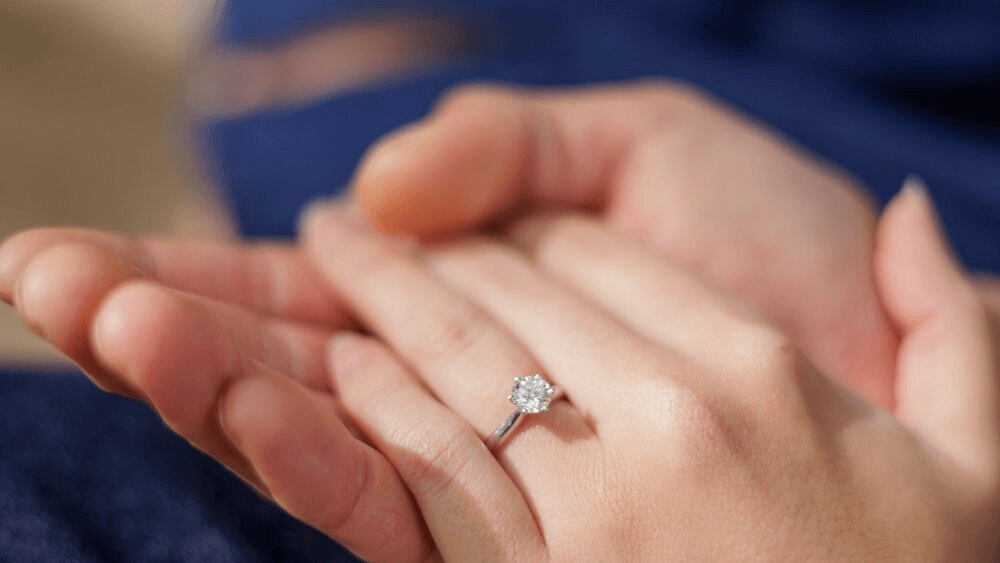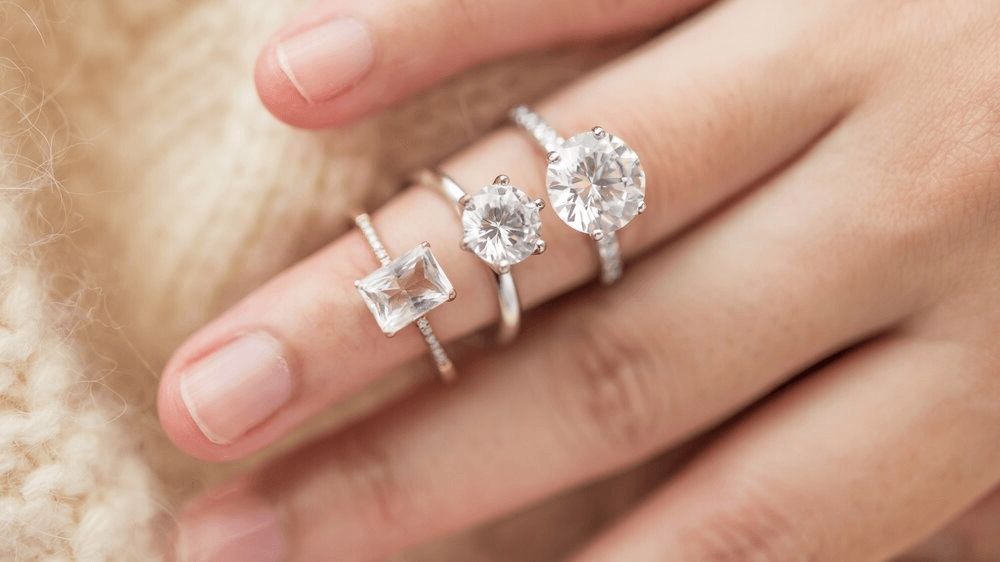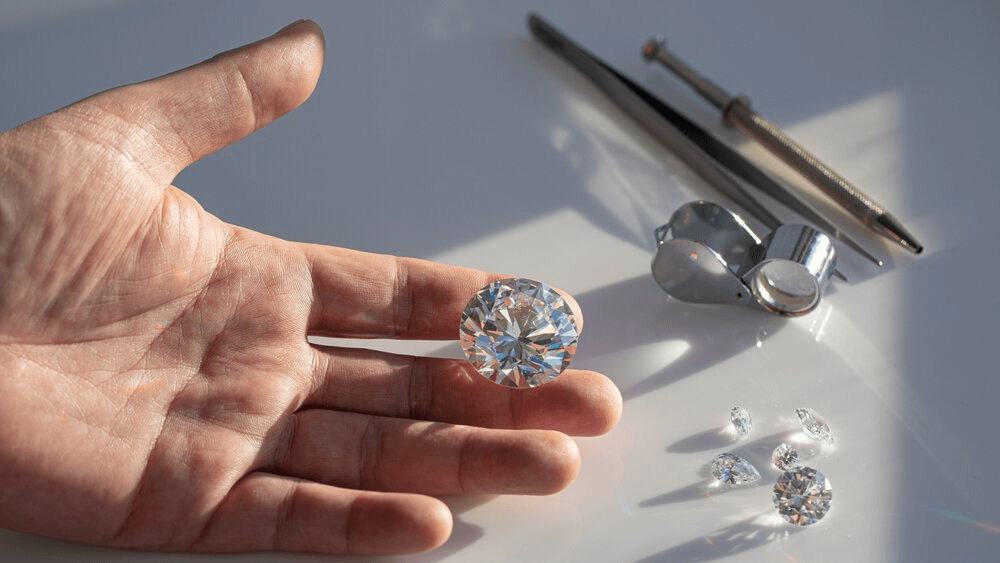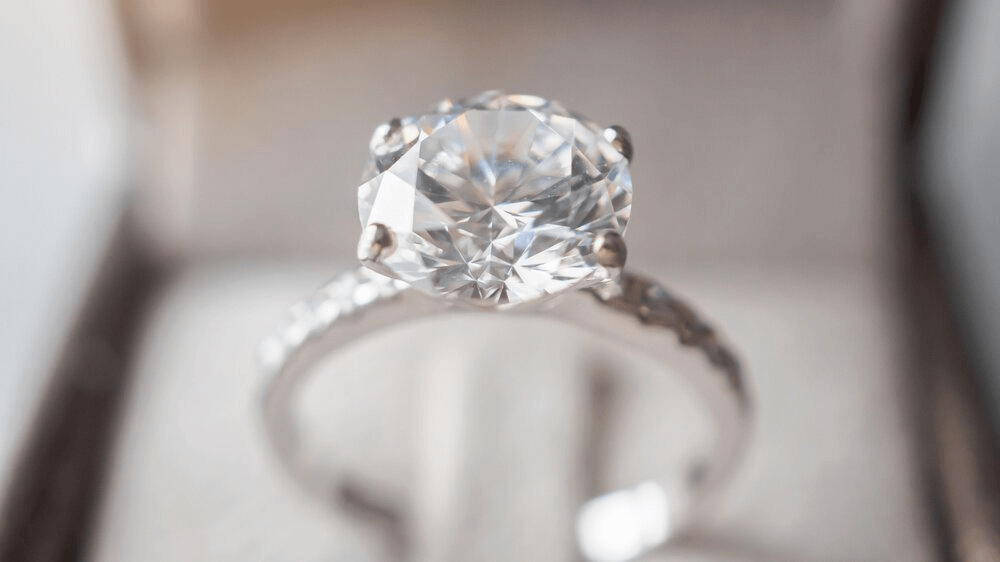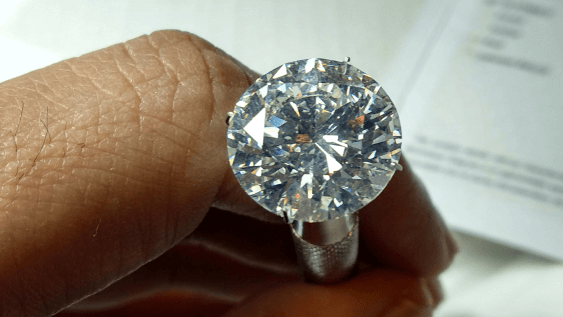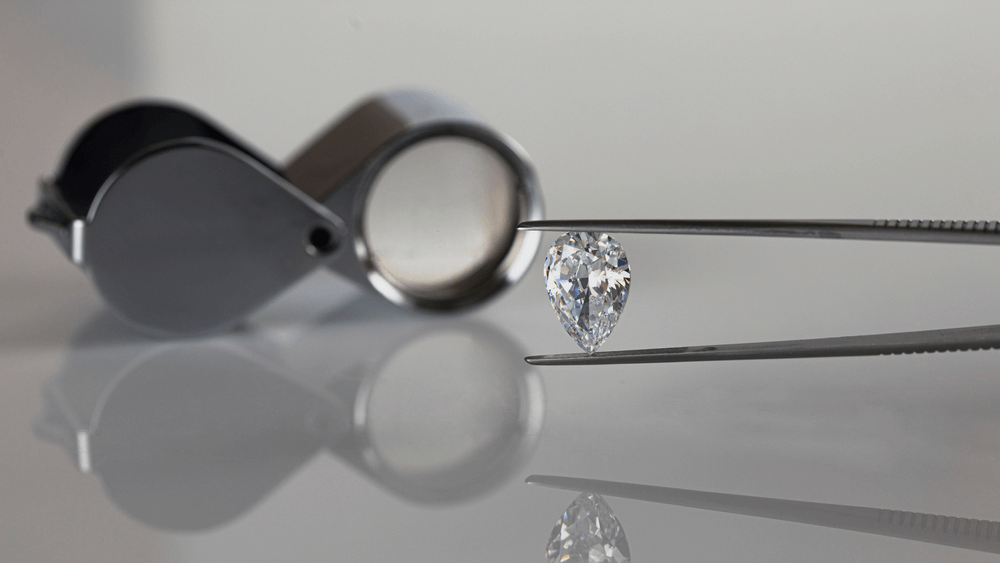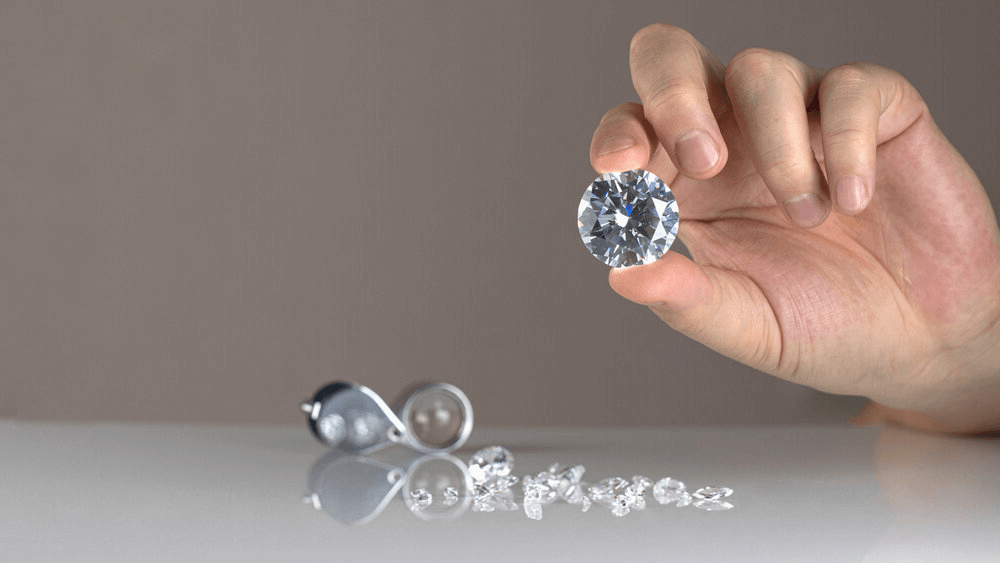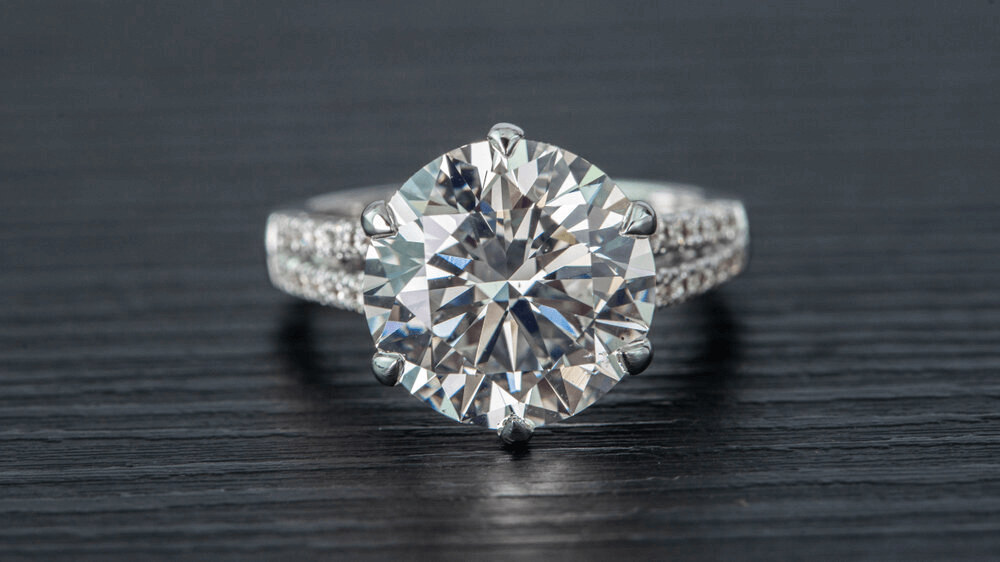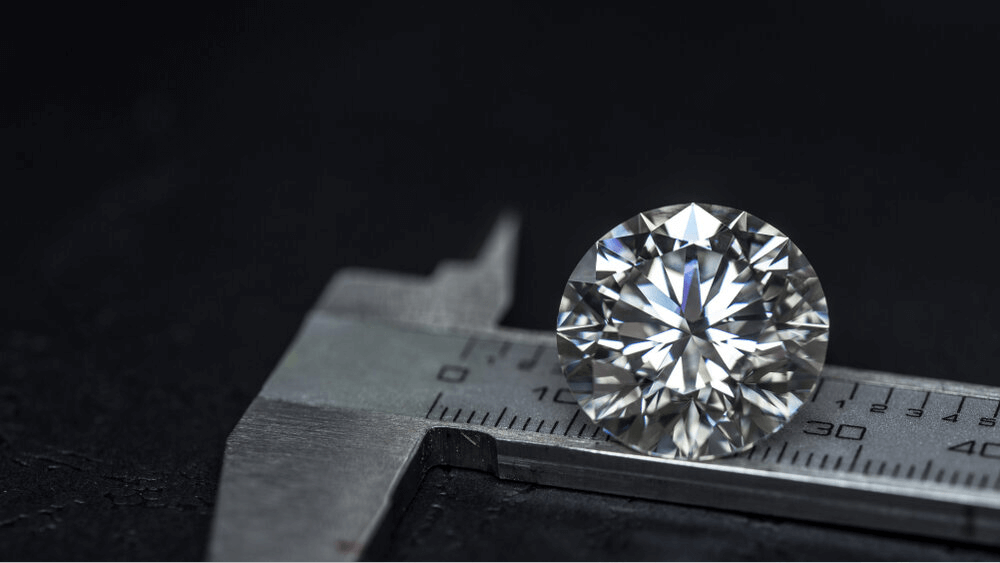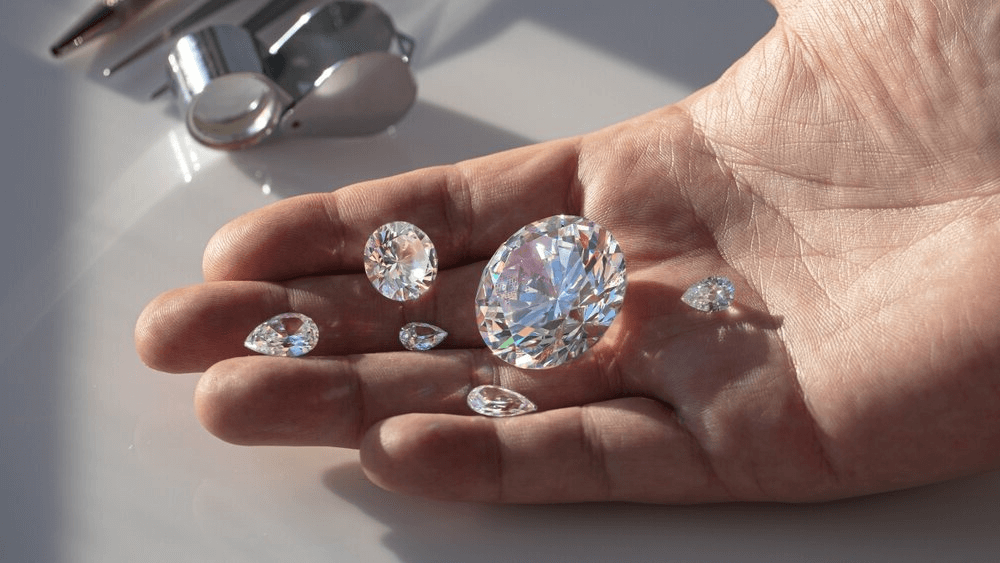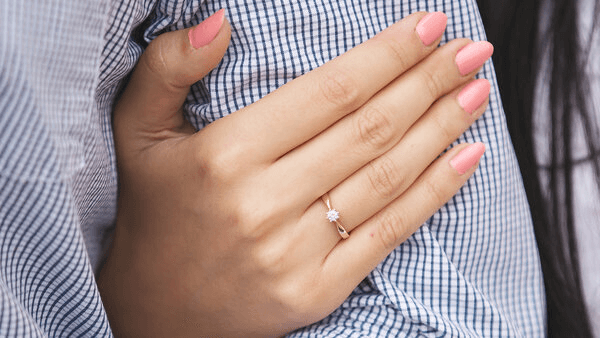The True Value of a 0.5 Carat Diamond Ring Revealed

By Gary A.

Edited by Olivia H.
Published Mar 17, 2022
Edited on Dec 18, 2024
If you are looking for a balance between elegance and budget, a 0.5 carat diamond offers a world of possibilities with its understated charm and brilliant sparkle.

- 6 Quick Tips for Buyers Navigating the 0.5 Carat Diamond Market
- Introduction
- The Allure of 0.5 Carat Diamonds
- The Basics
- Decoding the 0.5 Carat Diamond Ring Price: What Impacts the Cost?
- 0.5 Carat Engagement Rings: A World of Choices
- Our Expert Take
- 7 FAQs
Before we dive deeper into the specifics, here are some practical tips to help guide your decision-making process:
6 Quick Tips for Buyers Navigating the 0.5 Carat Diamond Market
When considering the purchase of a 0.5 carat diamond engagement ring, it’s important to focus on several key aspects to ensure you’re making an informed decision. These practical tips will guide you through the process, helping you understand the nuances of diamond pricing and quality, particularly for diamonds in the 0.5 carat range.
- Tip 1:Understand the 4Cs: Cut, Color, Clarity, and Carat Cut: A well-cut 0.5 carat diamond can appear larger and more brilliant than a poorly cut larger diamond. Look for cuts that maximize brilliance and fire. Color: Decide on the acceptable color range. Remember, slight color differences can significantly impact price without noticeably affecting appearance. Clarity: Choose a clarity grade where imperfections are not visible to the naked eye. For 0.5 carat diamonds, higher clarity grades may not significantly enhance the appearance but can increase the cost.
- Tip 2:Compare Diamond Certifications: Diamonds should be certified by reputable organizations like GIA or AGS. Compare certifications to understand the diamond’s quality accurately. Be cautious of uncertified diamonds or those certified by less recognized entities.
- Tip 3:Research Market Prices: Familiarize yourself with the current market prices for 0.5 carat diamonds. Prices can vary based on demand, economic factors, and new discoveries in diamond sources.
- Tip 4:Examine the Diamond Under Different Lighting Conditions: A diamond’s appearance can change under different lighting. View the diamond in natural light and under store lighting to get a complete idea of its brilliance and fire.
- Tip 5:Inspect the Diamond’s Setting: The setting can enhance or detract from the diamond’s appearance. For 0.5 carat diamonds, a setting that provides security and enhances the stone’s visibility and brilliance is ideal. A well-made setting can make the diamond look much bigger than it is.
- Tip 6:Understand the Impact of Diamond Shape on Perceived Size and Price: Different shapes can make a 0.5 carat diamond appear larger or smaller. Shapes like oval, marquise, and pear can appear larger than round or square cuts. The shape also affects the price, with some shapes being more affordable than others.
Now that you’ve got these practical tips, use Jeweler AI below to find the perfect engagement ring that suits your style and budget:
Introduction
What really is a ‘small’ diamond? There’s no right or wrong answer here, and what anyone says will depend on their expectations, budget, and their own ideas of what makes an engagement ring impressive and beautiful.
Given that, within the US, the average carat weight for diamonds used within engagement rings is around 1, we tend to approach half carat diamonds (or thereabouts) as being the right choice of center stones for smaller, daintier engagement rings.
The Allure of 0.5 Carat Diamonds
While the bigger, bolder engagement rings tend to get the lion’s share of the attention, there’s a lot to love for the understated designs like the 0,5 carat offers. While big diamonds are widely seen as the ultimate choice for any bride- or groom-to-be, it’s true that not every style will vibe with a standout center setting – not to mention the fact that not every budget will vibe with a large diamond.
A Gem of Many Facets
Buying a 0.5 carat diamond is a lot like buying a 1 carat, 2 carat, or 10 carat diamond – and, as always, there’s a lot that first-time shoppers need to know…
The Basics
Get your head straight on what ‘0.5 carats’ really means, and what 0.5 carats will look like on the finger, with our guide below.
What 0.5 Carats Means For You
A 0.5 carat diamond is 0.1 grams, or 100 milligrams. Carat refers to weight, not size, so the proportions of each diamond will differ depending on the shape and cut quality.
It’s also not the case that a 0.5 carat diamond appears half the size of a 1 carat diamond, since a portion of that weight difference will be found in the pavilion (lower portion) of the diamond, and not all centered on the surface diameter of the diamond.
The exact size of any diamond depends on how closely it adheres to the cut’s ideal proportions (something you should always ensure is the case in any diamond you invest in). The following guide offers the typical measurements for each diamond shape when cut to the correct proportions.
| Shape | 0.5 Carats | 1 Carat |
| Round Brilliant | 5 mm (diameter) | 6.5mm (diameter) |
| Princess | 4.5 x 4.5 mm | 5.5 x 5.5 mm |
| Oval | 6 x 4 mm | 7.7 x 5.7 mm |
| Cushion (square) | 4.9 x 4.9 mm | 5.5 x 5.5 mm |
| Pear | 6 x 4 mm | 7.7 x 5.7 mm |
| Marquise | 8 x 4 mm | 10 x 5 mm |
| Radiant | 6 x 4 mm | 7 x 5 mm |
| Heart | 5 x 5 mm | 6.5 x 6.5 mm |
| Emerald | 6 x 4 mm | 7 x 5 mm |
| Asscher | 4.5 x 4.5 mm | 5.5 x 5.5 mm |
As you can see, the difference in size between a 0.5 carat diamond and 1 carat diamond of the same shape is usually around 15 – 20%. It’s not as big of a difference as you might imagine, but it’s also substantial enough that you’ll probably know right off the bat whether or not you’re okay with sacrificing half a carat from your center stone.
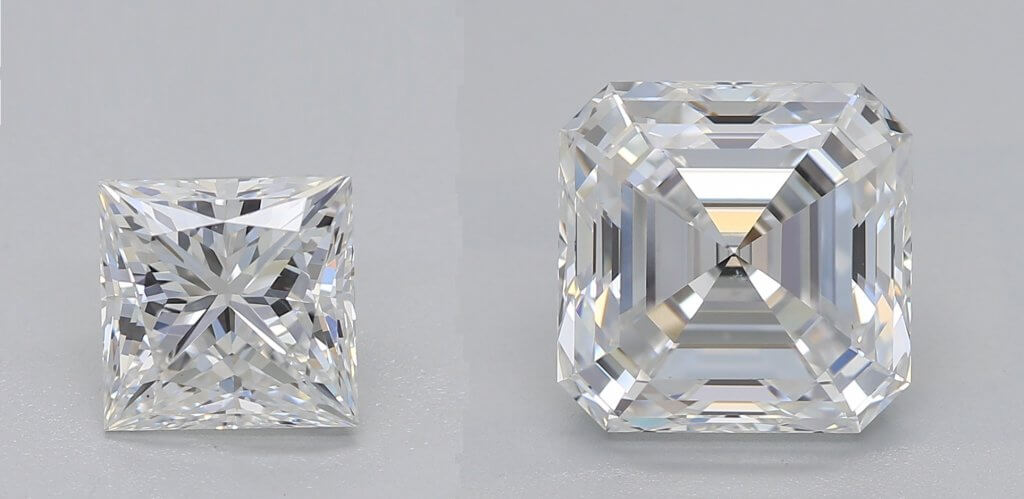
If you’re finding it hard to picture, here is a side-by-side comparison of two diamonds – one 0.5 carats, and the other 1 carat.
Balancing Size, Quality, and Budget
If you like the look of the daintier, more understated engagement rings, then a 0.5 carat diamond is the ideal size for your center stone. It’s not so small that the ring will look ‘lost’, but small enough to make a statement all of its own.
If you’re looking for an engagement ring that lives up to the usual expectations, then 0.5 carats will fall significantly short. While you wouldn’t notice much difference with, say, a 0.9 or 0.95 carat in place of a 1 carat diamond, a diamond that is 15 – 20% smaller than the average will be noticeably smaller.
That’s not to say that your ring will look worse for it, however. For starters, half carat diamonds are very popular in the UK, where the average carat weight stands at a more modest 0.6.
Dainty engagement rings are very popular, and they are far better suited to wearers who prefer to keep their style a little more toned down. Plus, if they’re particularly active, a smaller diamond can simply prove easier to wear.
Decoding the 0.5 Carat Diamond Ring Price: What Impacts the Cost?
While it varies depending on the diamond’s shape and quality, shoppers will find plenty of beautiful 0.5 carat diamonds worthy of an engagement ring for less than $3,000.
Round Brilliant diamonds are the most expensive, while some of the more economical cuts include the Princess and the Emerald. Bringing down the cost of your 0.5 carat diamond is a case of paying attention to the rest of the Four Cs and understanding where you can afford to make sacrifices (and where you can’t) …
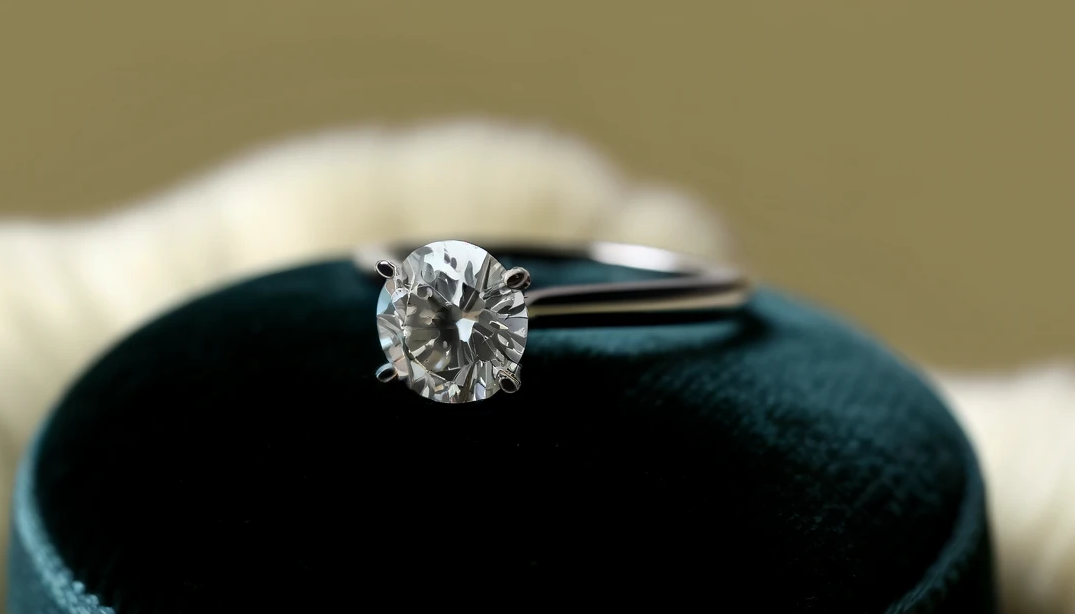
Natural vs Lab-Grown 0.5 Carat Diamonds
When choosing between natural and lab-grown 0.5 carat diamonds, both options offer unique advantages.
Natural Diamonds:
- Origin: Formed over millions of years deep within the Earth, each natural diamond carries a unique story.
- Value: Typically retains higher resale value due to their rarity and perceived desirability.
- Ethical Considerations: Sourcing may raise questions about ethical practices, depending on the supplier.
Lab-Grown Diamonds:
- Creation: Made in controlled environments using advanced technology, these diamonds are chemically identical to natural stones.
- Affordability: Generally cost 20-40% less than their natural counterparts, making them a budget-friendly choice.
- Sustainability: Often marketed as a more ethical and eco-friendly option, as their production does not involve mining.
Here’s a table summarizing the average prices of lab-grown vs. natural diamonds for 0.5 carat stones, along with a brief explanation.
| Carat | Shape | Color | Clarity | Natural Price ($) | Lab-Grown Price ($) |
|---|---|---|---|---|---|
| 0.5 | Round | F | VS2 | 1400 | 600 |
| 0.5 | Pear | F | VS2 | 1220 | 520 |
The table above illustrates the average prices for 0.5 carat diamonds in both natural and lab-grown categories. As seen, natural diamonds command a significantly higher price, with round diamonds averaging $1,400 compared to $600 for lab-grown. Similarly, pear-shaped diamonds show a natural price of $1,220, while lab-grown versions are priced at $520.
Ultimately, the decision hinges on personal values, preferences, and budget. Each diamond type offers beauty and brilliance, perfect for any engagement ring.
0.5 Carat Engagement Rings: A World of Choices
Whether you want to find ways to make your diamond appear as big as possible, or create something suitably dainty and intricate, here are some of our favorite ideas for 0.5 carat engagement rings.
The Skinny Band Solitaire: A Ring That Speaks Volumes
The most iconic engagement ring setting ever made is, without a doubt, the solitaire. Whether you go head-first into tradition with a Round Brilliant solitaire or reinterpret this style with a more modern diamond shape like the Princess or Heart, the simple-but-powerful ring design is a crowd favorite at any carat weight.
Something to keep in mind, however, is that smaller diamonds can look even smaller when they’re mounted within their ring. The four or six prongs holding them in place, combined with the shank running beneath them, will all alter your diamond’s impact a little.
This is where the skinny band can prove very useful for anyone looking at smaller diamonds. As the name suggests, this is a very thin, fine band of metal that takes up a lot less space on the finger and, as a result, creates far less of a contrast with the diamond.
Opting for a skinny shank makes the entire ring look smaller, rather than just the diamond, meaning that the lower carat weight of your stone isn’t the first thing onlookers notice when the ring catches their eye.
Besides, the overall effect is a lot daintier, which is a great benefit for petite hands and fingers – or more low-key styles. This is proof that a 0.5 carat engagement ring doesn’t need to look underwhelming.
The Floating Diamond Engagement Ring: Modern Chic
As we mentioned above, a part of what makes a diamond look smaller is the setting itself. Using more prongs than is strictly necessary, or overwhelming the center stone with a bulky halo, means concealing more of the diamond from view and, as a result, making it appear smaller.
While even the most skilled jeweler can’t literally float your diamond above the shank, there are ways of leaving as much of the diamond exposed to the light as possible – and creating the illusion that it’s barely being held down at all.
Not only will this mean that you get as much surface area from your diamond as possible, but it will also mean that the diamond is able to draw in more light and, as a result, create even more sparkle. Brighter diamonds naturally look larger than dull or lifeless diamonds, so floating your diamond with a half-bezel or tension is a great trick for maximizing impact.
You can read our guide to floating diamond engagement rings here.
The Pavé Engagement Ring: Classic Elegance
With a smaller diamond, you will miss out on some of the sparkle that larger diamonds naturally bring to a ring. A 0.5 carat ring will still offer a beautiful light performance but, compare it with a 1 carat ring, and you’ll probably spot the difference pretty easily.
If you want to get a little extra brilliance and fire into your ring, then paring your diamond with a pavé shank of Round Brilliant melee diamonds will give the entire ring a boost of sparkle, without pushing you over budget.
If you’re still keen to make your diamond look as big as possible, then a micro pavé setting will create more of a contrast between the center stone and the other diamonds.
Vintage-Style Half-Carat Engagement Rings: Romance in the Details
Vintage engagement rings can vary from the simple to the ornate, but they don’t have to be bulky or cumbersome and can be perfect for accentuating the beauty of smaller diamonds.
A 0.5 carat Emerald cut diamond, for instance, will be complemented beautifully by a vintage Art Deco style setting. This style is characterized by minimal embellishment, geometry and symmetry, and a level of elegance that is clear even without any intricate metalwork to frame the center stone.
But, at the same time, intricate metalwork may be right up your alley. Vintage-style settings that incorporate features like filigree (the delicate, vine-like metalwork you see on more ornate rings) and beading can create the perfect vibe, without drowning your diamond in metal and extra detailing.
With a style like this, the half carat diamond price is more attractive if you’re on a budget, but compensated for by the sheer romance of the design.
A Square Halo Round Diamond Engagement Ring: Understated Luxury
Halos are widely celebrated for their ability to make a diamond look bigger than it really is, by adding weight and sparkle to the center setting. They are very effective – not to mention beautiful – but, if your diamond is on the small side, there is a risk that it will look swamped, rather than given more prominence by the halo.
While you could create a very fine halo, a great way to add sparkle without overshadowing your half carat diamond is to combine a Round Brilliant with a square halo, positioned just a little lower than the diamond. The contrast between the two will help to keep the diamond from being overwhelmed by the setting, while still adding the brilliance and fire your ring might be in need of when its center stone is on the smaller side.
Our Expert Take
It would be a major mistake to feel like you had to stretch your budget – and go against your partner’s sense of style – to accommodate a larger diamond ‘just because’. Sure, 1 carat diamonds are the average in this country, but that average is the product of plenty of people buying significantly larger diamonds and plenty of people buying significantly smaller diamonds.
Besides, it doesn’t matter what other people are proposing with unless you tell yourself it matters. While half a carat isn’t a high weight for a center diamond, stones of this weight have been used time and time again to create some of the most beautiful, dainty, feminine and striking engagement rings we have seen.
Shopping for diamonds around 0.5 carats is a great way to save money but, beyond that, it’s also a great way to create something totally unique, and perfectly suited to your partner’s tastes.
7 FAQs
- Q: How much does a 0.5 carat diamond ring typically cost?
- A: The cost of a 0.5 carat diamond ring varies widely based on factors like cut, color, clarity, and the type of setting. On average, prices can range from $1,000 to $4,000.
- Q: Is a 0.5 carat diamond considered small for an engagement ring?
- A: A 0.5 carat diamond is considered modest in size. It’s ideal for those seeking a balance between elegance and affordability.
- Q: What does a 0.5 carat diamond look like in terms of size?
- A: A 0.5 carat diamond typically measures around 5mm in diameter. Its perceived size can vary depending on the cut and setting.
- Q: Can you tell the difference between a 0.5 carat and a 1 carat diamond easily?
- A: To the untrained eye, the difference in size may not be immediately noticeable, especially when the diamond is well-cut and set to enhance its appearance.
- Q: What are the best settings for a 0.5 carat diamond ring?
- A: Popular settings include solitaire, halo, and pavé. A setting that maximizes the diamond’s visibility and brilliance is ideal for this carat size.
- Q: Does the shape of a 0.5 carat diamond affect its appearance?
- A: Yes, shapes like oval, marquise, and pear can make a 0.5 carat diamond appear larger, while round and square shapes tend to look true to their carat weight.
- Q: How important is diamond certification for a 0.5 carat diamond?
- A: Certification is crucial as it assures the quality and authenticity of the diamond. Look for certifications from reputable organizations like the GIA.
Find your perfect 0.5 carat diamond ring with Jeweler AI – a journey of elegance and value awaits
Here are more specific diamond prices topics to browse:
- Melee Diamonds: The Perfect Accents to Enhance the Center Stone
- Small Diamond Engagement Rings: Big Sparkle Comes In Little Packages
- 0.25 Carat Diamond: Tiny Treasure or Just Too Small?
- 0.7, 0.8, 0.9 Carat Diamond Showdown: Which One Wins?
- Price Alert: Don’t Overpay for a 1 Carat Diamond Ring!
- What You Should Pay for a 1.5 Carat Diamond Ring?
- Price Alert: How Much Should You Pay for a 2 Carat Diamond Ring?
- How Much Does a 2.5 Carat Diamond Really Cost?
- The Real Cost of a 3 Carat Diamond Ring
- Industry Secret: How Much Does a 4-Carat Diamond Ring Actually Cost?
- How Much is Too Much? The True Cost of 5 Carat Diamond Ring!
- 6 Carat Diamond Rings: Pricing Breakdown & Value Tips
- 7 Carat Diamond Rings: Affordable Luxury Prices Revealed
- 8 Carat Diamond Rings: Price Comparison & Savings Tips
- 9 Carat Diamond Rings: Detailed Pricing Guide & Best Deals
- 10-13 Carat Diamonds: The Ultimate Symbol of Luxury!
- 15 Carat Diamonds: Why Celebrities Love Them!
- Unveiling the Majesty: The Secrets Behind the 20 Carat Diamond Ring!
- Decoding the Grandeur: The Journey to Choosing a 25 Carat Diamond Ring
- Average Carat Size for Rings: What’s the Ideal?
- Understanding What Is CTTW Diamond In Engagement Ring
- The Truth About Why Diamonds Are So Expensive and Incredibly Valuable
FOLLOW-UP GUIDE SERIES

